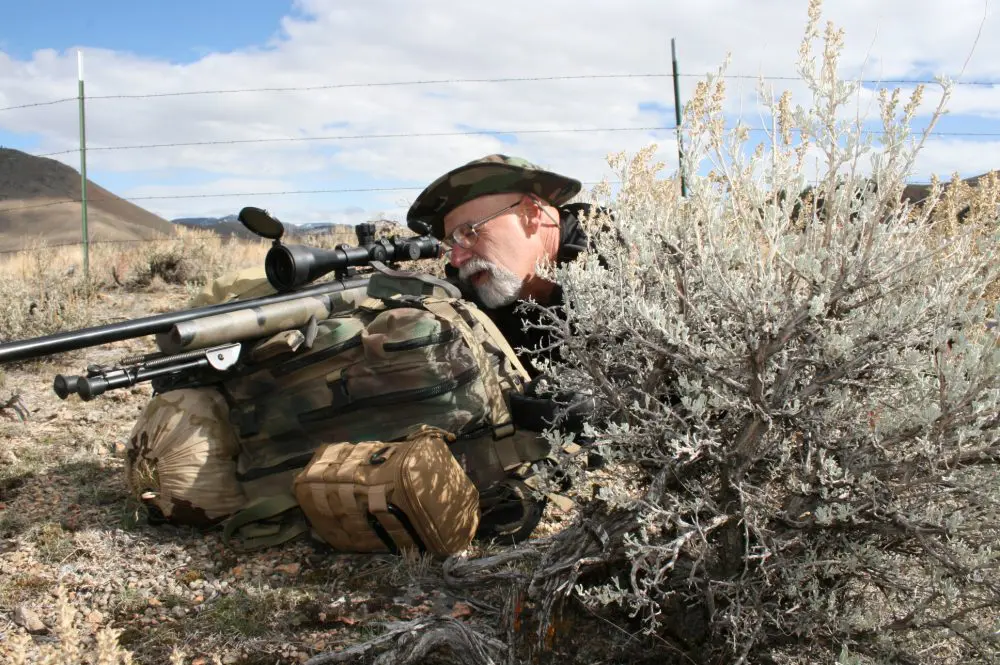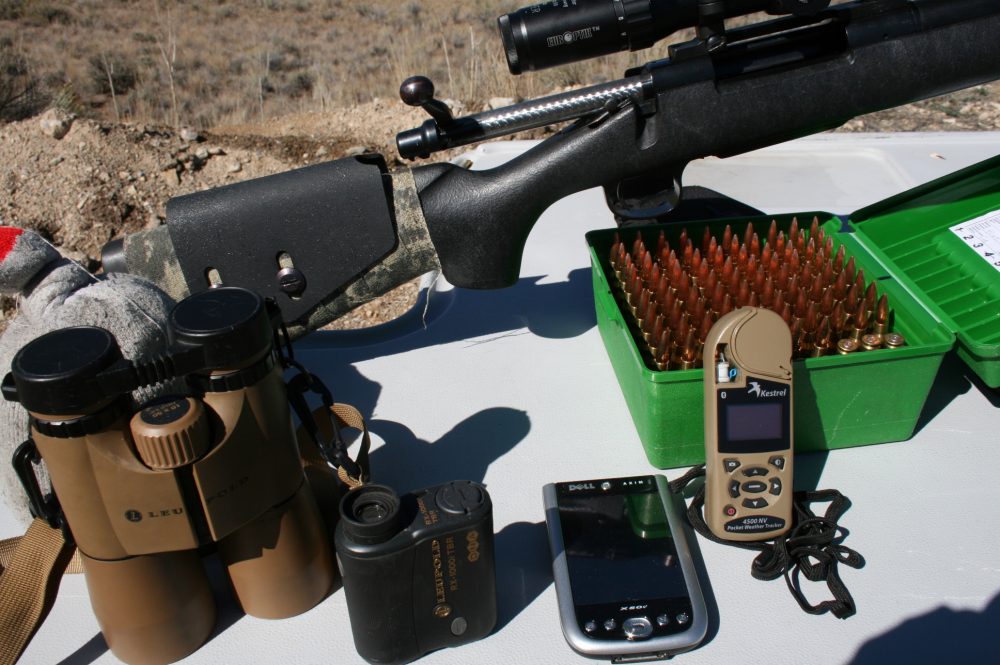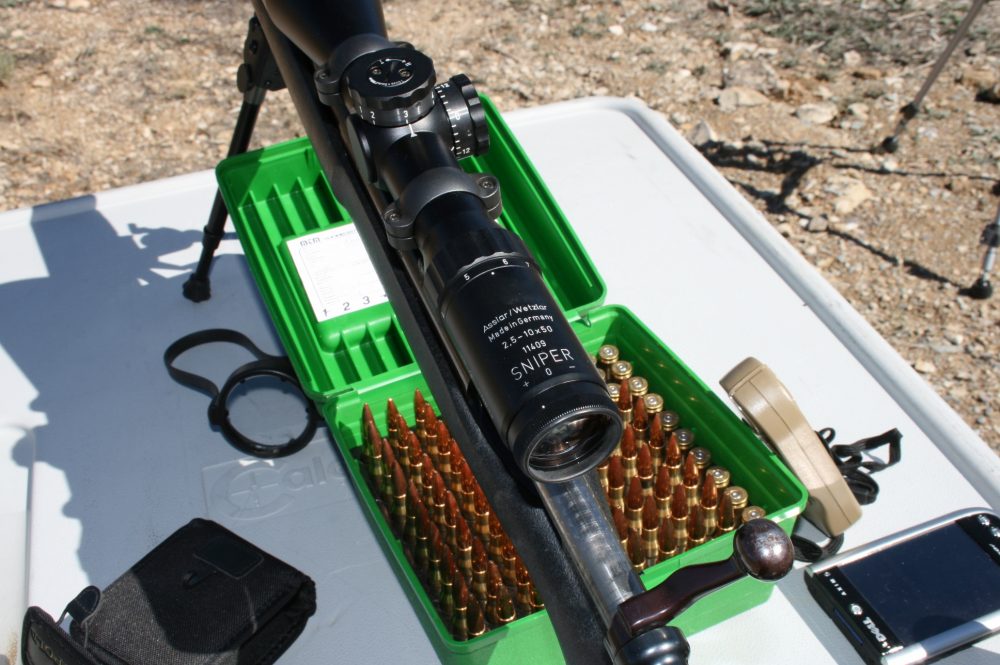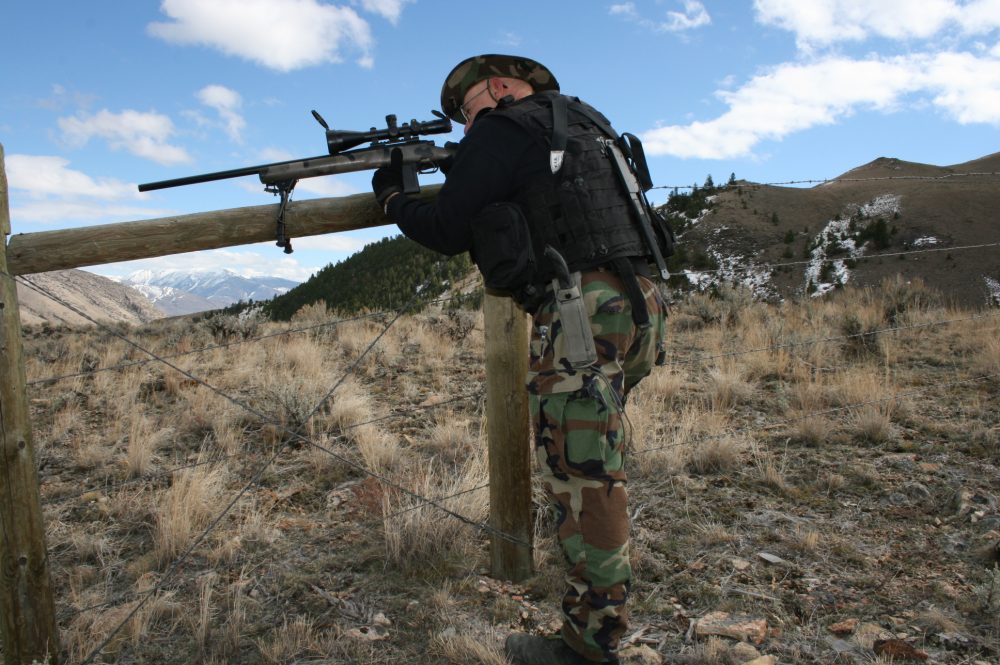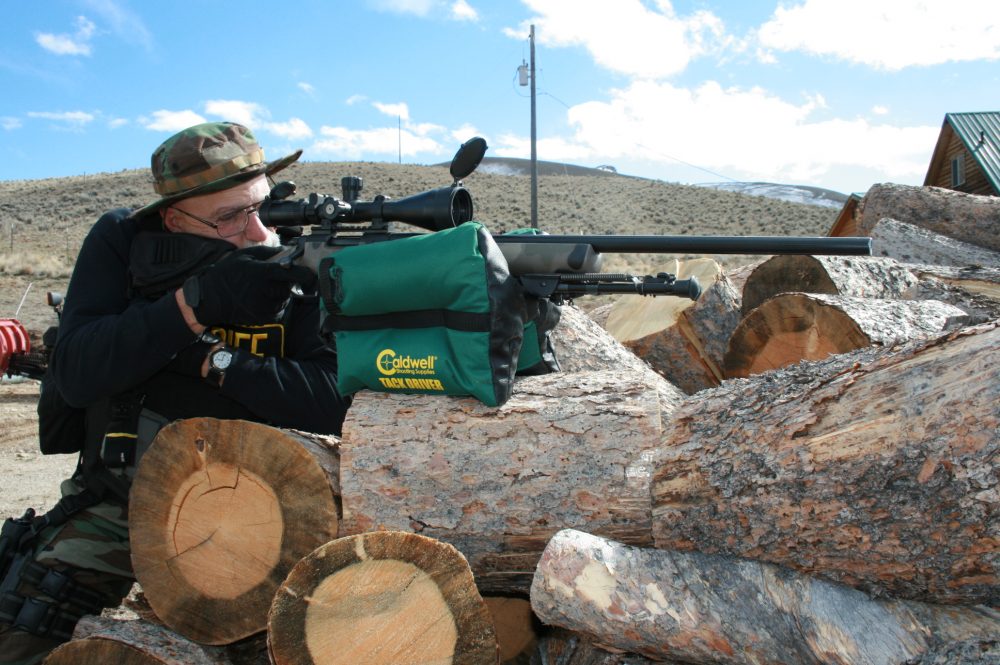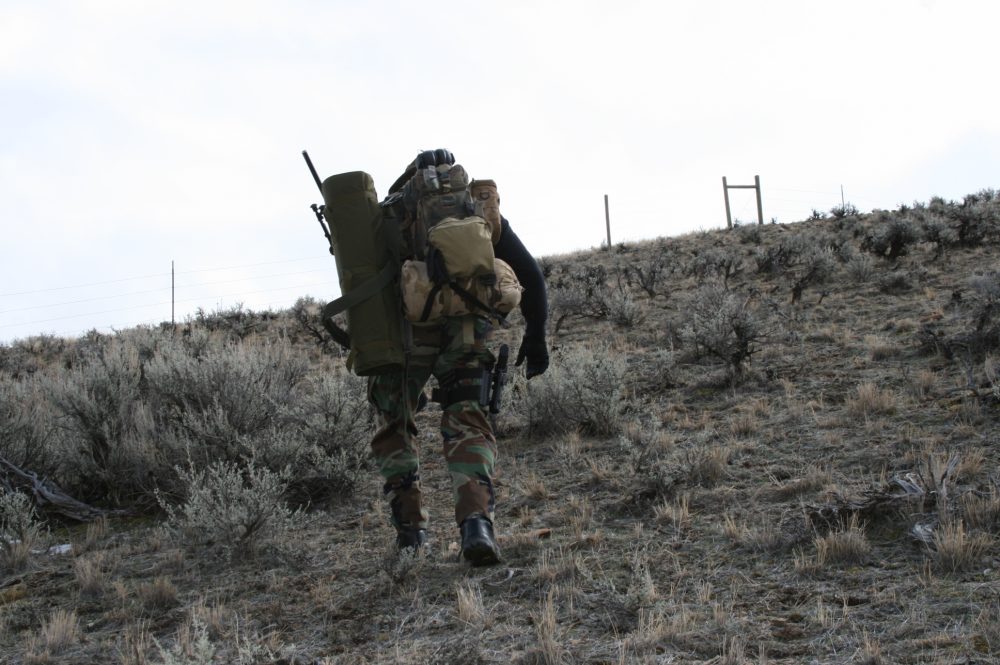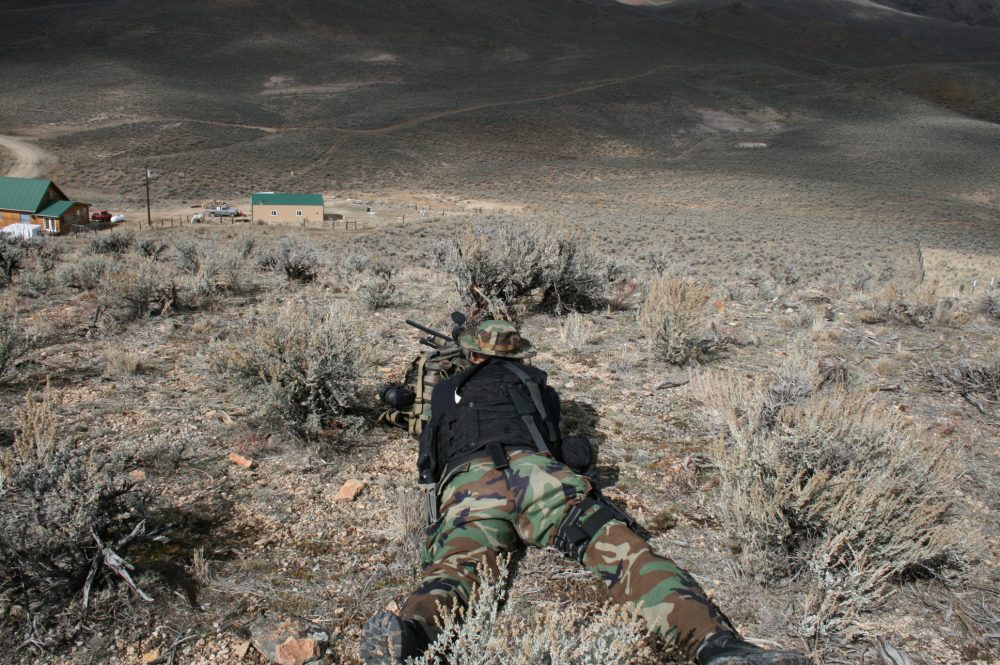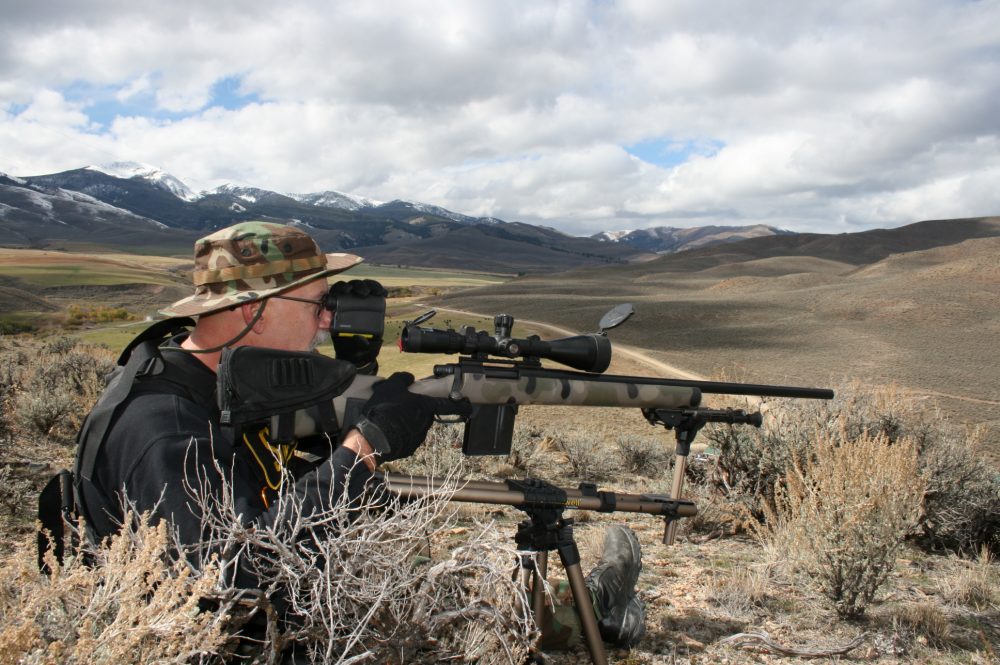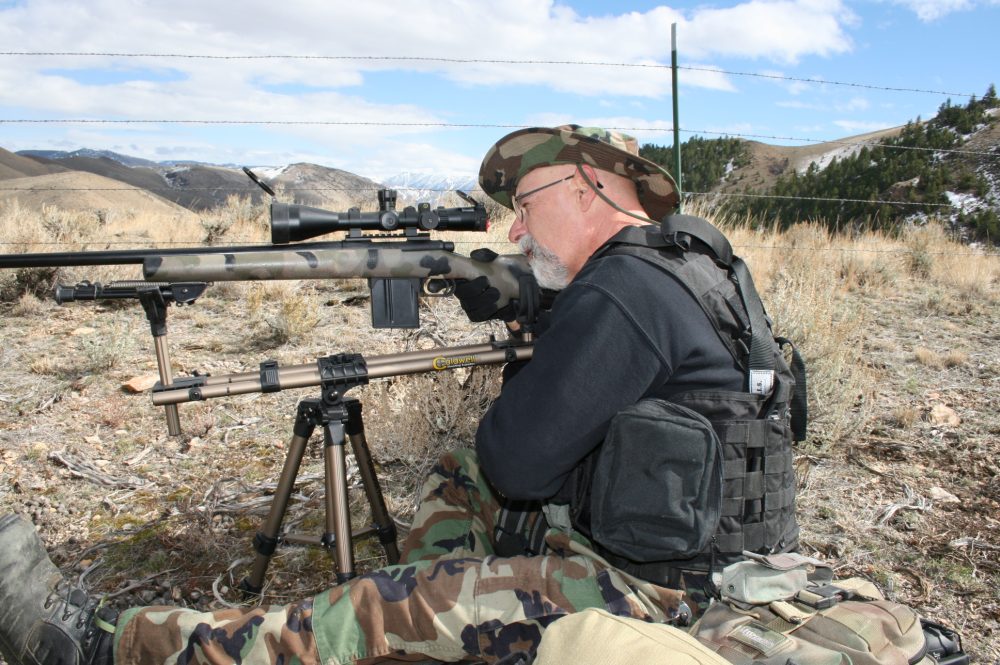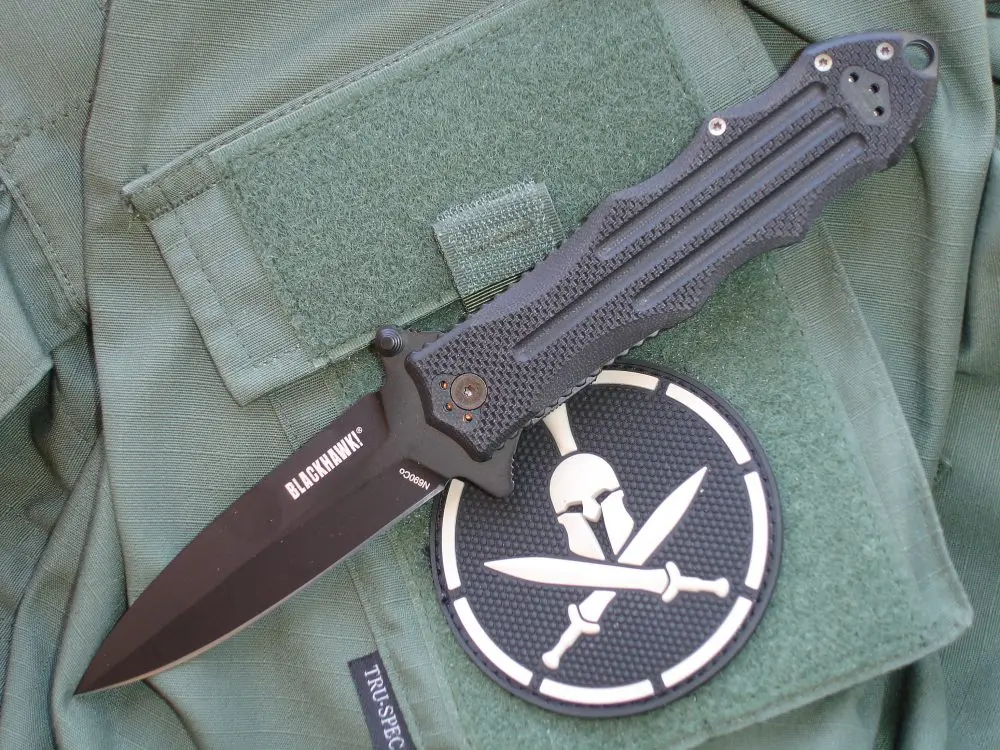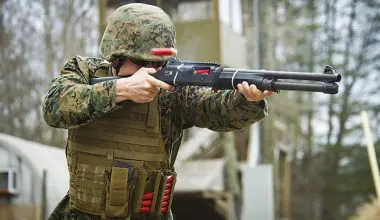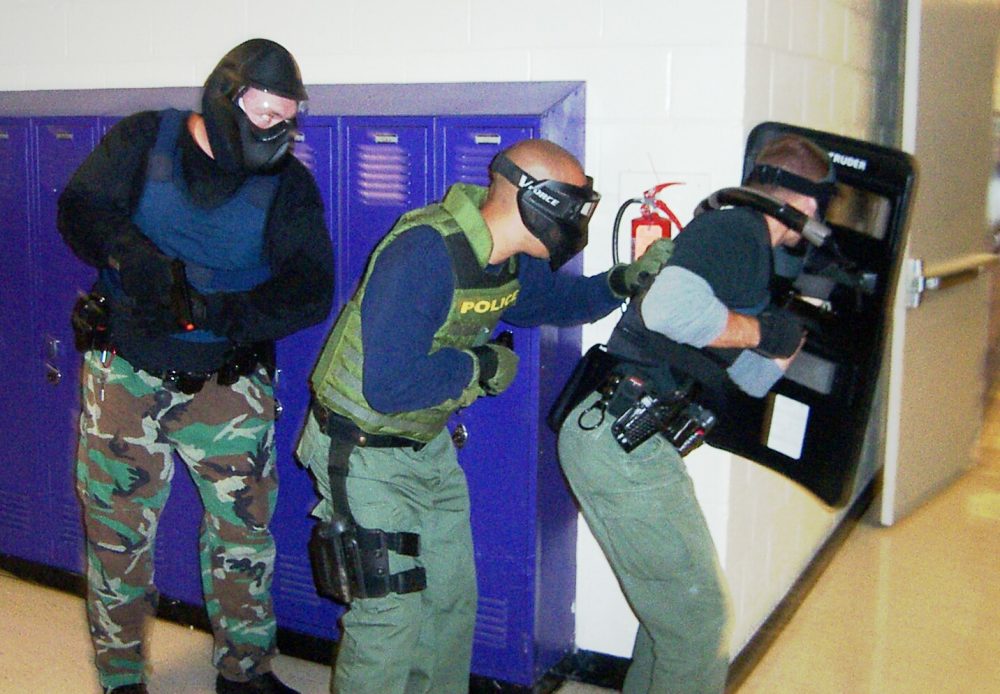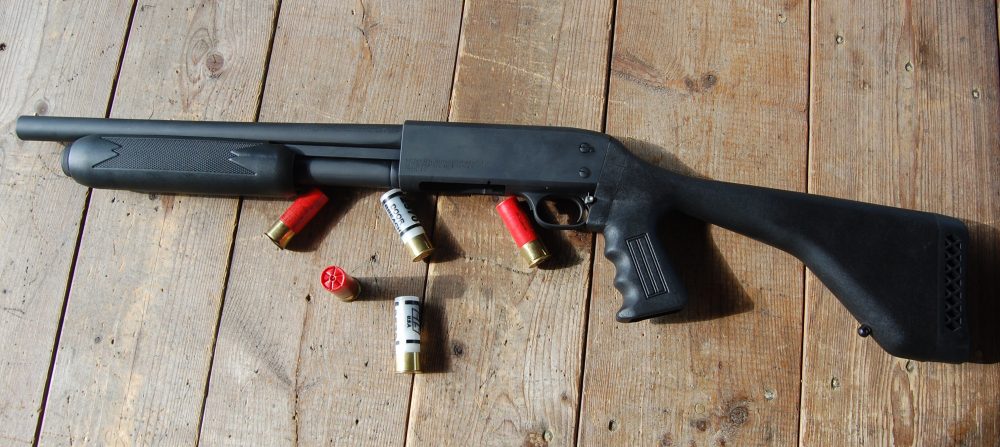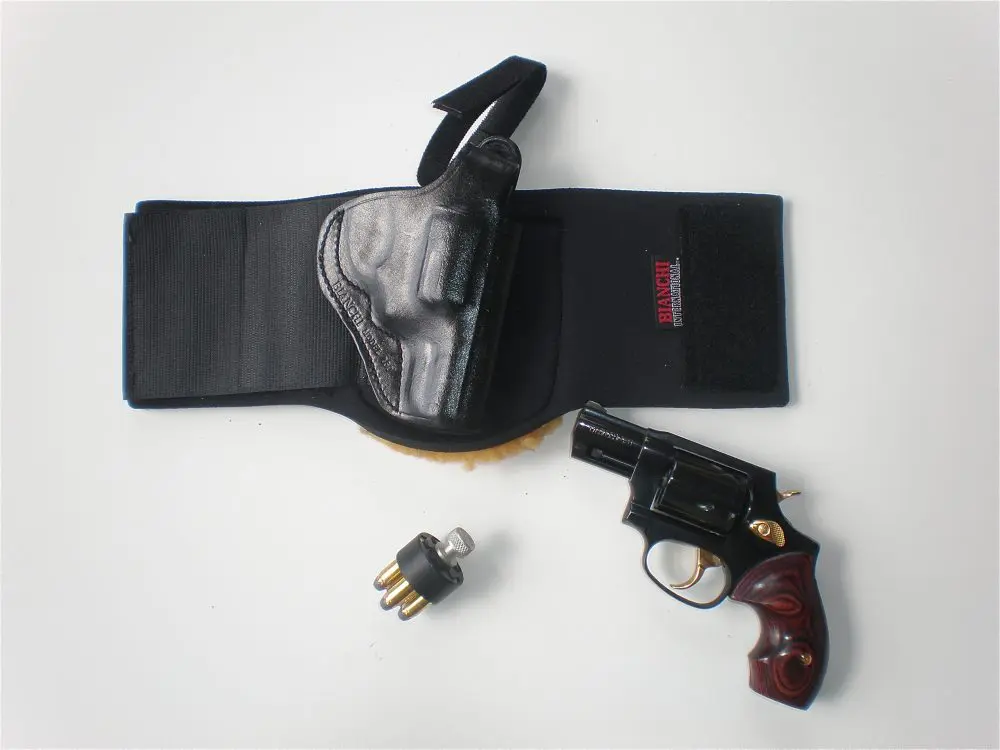Pack rest is solid, and ranging gear is easily accessible in outer pockets.
I was listening to—some might say eavesdropping on—a couple guys talking about snipers at a gun show. To hear them talk, you’d think there are two types of sniper training.
While I admit there are many differences between the missions, the snipercraft basics are mindset, marksmanship, and fieldcraft. Basically, snipers are snipers. The differences among them are the surroundings they are placed in and how they overcome the difficulties presented to them. Rules of engagement may differ between disciplines, but the sniper must adapt to the situation before him and be able to deliver precise fire at exact moments in order to preserve life. Sniping is a life saving tool.
Table of Contents
OUT IN THE COUNTRY
Rural America has become more and more a target for terrorism, and has always had incidents of violence from extremists and criminal activity. Most folks move to rural areas to be left alone and live a quiet lifestyle with perceived little intrusion from government.
Some live in semi-urban areas and some out in the boonies. Some live on big tracts of land and some on smaller, but none are immune to the human element. They may become victims of an intrusion or find themselves in an escalated violent domestic situation. The rural law dog must prepare for these occurrences, rare as they are.
Most of my experience has been in urban environments: housing tracts, tall buildings, and tightly packed businesses and apartment complexes. Missions have been as short as the guy giving up during recon to long stints on a rooftop during negotiations.
Spotting scope, quality binoculars, rangefinder, PDA, and weather station are some of the tools author practices with and carries in his pack.
Most set-ups involved recon to the best advantage for a hide, usually a building across the street or the roof of a nearby house. Occasionally the action started as soon as the car door closed. Other times there was an extended set-up and plan for a full-blown assault when negotiations failed.
Fieldcraft was urban related, as was some equipment. Marksmanship was always important. The distances were usually short, but the likelihood of collateral damage was high.
Now I work in a super rural community. I say super because the largest, nearest “city” has a population of 3,500. Most of the county is ranch land and the rest BLM, Forest Service, and Wilderness. The likelihood of a sniper plying his trade here is slim, but not out of the question.
Being a rural community, it is also a hunting community, and the Second Amendment is alive and well here. Everybody not only has a gun, but several. This makes the community safe and polite.
Good quality scope, like this Sniper from Euro Optics 2.5-10X50, is a must for any professional rifle.
WIND AND BULLET FLIGHT
When serious problems arise, the rural sniper must be prepared to alter his tactics to fit the environment. First are elements that affect bullet flight. I don’t know if a day goes by that it isn’t at least a little windy, and usually it’s very windy. There are no high buildings to break wind and, out in the boonies, open areas between homes and ranches are vast, with few wind breaks.
A simple but accurate formula for wind calculations is range in 100 yards x wind speed in mph divided by 15 = MOA correction. For example, a 300-yard shot with a 15 mph wind would be 3×10÷15 = 2 MOA. This is valid out to 500 yards.
The math constant (15) changes as the distance increases as follows:
- 600 yards divide by 14
- 700 yards divide by 13
- 800 yards divide by 13
- 900 yards divide by 12
- 1,000 yards divide by 11
I like the formula because it would be rare for a police sniper to take a shot at 500 yards, let alone over that, so the only constant I have to remember is 15.
The other important factor is practice in windy conditions—which is most of the time for me. It will become habit. Corrections will be made from training and calculations will be more of a confirmation.
Using available rests. Fence posts make extremely solid rests used in this fashion. If it’s sound and pointing in the right direction, it works very well.
RANGEFINDERS AND WEATHER METERS
Two important factors will be accurately estimating wind speed and range. If these are not precise, the calculation will not be precise. The correct range is important for wind speed and elevation correction. I use a rangefinder every time in life-or-death situations. Hunting has a greater latitude of area to hit for a clean kill—not so for precision fire.
I like rangefinders that also calculate angle of inclination for the most precise range. I have used Leupold’s equipment for this and really like the RX1000i TBR because of its size and because it also provides MOA drop calculations.
I did some live fire at my 300-yard gong from a hill above a rural home. From up on the hill, the gong was 439 yards with a seven-degree downward angle. The wind was full value five mph with higher gusts.
The Leupold rangefinder gave me a 7.2 MOA elevation correction, and the wind formula calculated out to 1.5 MOA if I shot in between the gusts. Three shots, three hits using the Leupold’s recommendations.
Caldwell Tack Driver on the woodpile. These bags level up uneven platforms in a pinch.
Another method to calculate elevation corrections is a PDA with ballistic program installed. The nice thing about a PDA is it will figure in some of the environmental changes at the moment of the shot, such as altitude, temperature, and pressure. Altitude is a consideration because the county I work in can have 2,500 feet of difference from place to place.
Wind speed can be estimated from how vegetation and debris react to it, but the wind meter is a better choice. The only problem with the meter is that it only will give you the speed where it is at—not downrange.
The advantage of a meter like the Kestrel 4500 is that it calculates all the other environmental data that can be fed into the mix. By practicing and confirming what the wind is doing to the vegetation at the hide with the meter, the shooter can estimate direction and speed downrange through the scope.
Another important consideration in my area is inclination. There is some flat ground, but most of the county is mountains and even the lower elevations are hilly. Lots of shooting practice up and down, mostly down because a premium hide will be above the threat.
Along with varying conditions is the weather. Bad guys don’t always present themselves when it’s sunny. This isn’t practiced enough by most departments, but shooting in nasty weather will also improve the marksman’s preparation for real-time missions.
Unlike his urban counterpart, rural sniper must carry everything he may possibly need with him, and hike into the objective.
RURAL SNIPER’S EQUIPMENT
The rural guy has much the same equipment needs as any other sniper, but may tweak his bag a little for his environment. The standard is the .308 Winchester caliber in bolt or semi-auto configuration. Some rural guys like the .300 Winchester Magnum for better range and penetration. The .300 has become a popular caliber for snipers as it gives greater long-range terminal energy and shoots a bit flatter than the .308.
Longer shots require thinking about scope options. Euro Optics 2.5-10 Sniper scope is a good choice. It is on a 30mm tube with 50mm objective. This should handle light-gathering problems. The glass is extraordinary and it has a ranging reticle. The 10-power will get out to the farthest target, and the 2.5 gives close-up advantage. Occasionally we have to dispatch large wildlife injured by vehicles. The 2.5X comes in handy for that. The scope has elevation turrets for a variety of calibers, and the 7.62 is very accurate with my 175-grain BTHP Sierra bullet.
Nightforce, Leupold, and a host of others are all great glass and come in a variety of options. Choose one that will fill as many of your needs as possible.
The sniper needs to have a good rest to deliver precision fire, and there are a number of them that work in a lot of situations. The bipod and a rear squeeze bag have always been my favorite, and sitting at a table or in prone position is rock solid.
Urban snipers rarely fire over 100 yards and usually much closer. House shown here is 280 yards.
With the rifle equipped with a bipod, my pack also has a rear stock support bag by Caldwell and a handmade sock filled with beans. When the shooter has a level place to shoot from, this provides the steadiest rest. I also keep a Caldwell Tack Driver bag close by because it’s a real steady quick rest off a table or vehicle hood.
The bag is versatile and adapts to many platforms. If your cover and hide are behind a pile of firewood, it makes a solid rest on the uneven surface. It also works well on the ground and is a little higher than the bipod if that is needed. The pack itself makes a good rest and is already with the sniper. I keep my ranging gear and binoculars on outer pockets so they are accessible from a shooting position.
I use cross-sticks when coyote hunting from a sitting position. They are better than shooting from kneeling unsupported, but there is a lot of side-to-side play, and the sniper must practice to control this. It’s steady enough on a coyote hunt, but more practice is needed for a precise shot. A better choice is a Dead Shot Field Pod from Caldwell. This is a tripod affair that holds the rifle on the forearm and the buttstock. It is very light and compactable, and the height adjustment is from 20 to 42 inches. Caldwell products are available at stores such as Cabela’s and Bass Pro Shops.
Sometimes the sniper finds himself in a spot where he must improvise. A fence post, shrub branch, or the nook of a tree branch may be all that is available. The stiffener posts between spans of barbed wire can make a great rest. I engaged the 439-yard gong placing the V of the bipod over the horizontal post with my back against the vertical post. It was very solid.
Ranging 439-yard shot with Leupold RX 1000i TBR.
A large knife or chopping tool should be in the pack, and I also carry a folding saw. These are great for removing obstructions or cutting a notch for a rest in a tree.
I live in the same rural environment that I may be called to work in, so I practice in the hilly sagebrush terrain. I also pack a portable Magnum Rifle Gong from Caldwell. It’s light enough to set up a difficult shot in the sagebrush and shoot from a hide at whatever distance I want to work with and discover the best tool for a rest in an area devoid of natural rests.
I like keeping things in the pack that will perform the widest variety of functions. Being a higher mileage guy, I don’t like packing useless weight. With standard equipment like glass, ranging tools, ghillie, food, water, ammo, cameras (if the mission dictates), and maybe a mat, the pack can quickly get heavy.
I don’t always pack a mat to the hide, but it’s in the truck. It makes lying on snow or cold ground a bit more comfortable. If those are the conditions I’ll be working in, I carry the extra weight.
Dead Shot Pod from Caldwell is a steady rest, better than cross-sticks for a seated position. It folds up to a small package and is extremely light.
RURAL CREEPIN’
Another thing that makes life difficult for the sniper in some of these areas is getting to a good hide undetected. In urban areas, buildings and shrubbery hide a sniper’s movements. Low sagebrush and farmers’ fields are more difficult to move through unnoticed. The sniper’s fieldcraft must be tailored to these conditions. Also, you might slip past the bad guy’s sight, but not past his horse’s nose.
Farm animals and the farmer’s dog will detect unfamiliar noises and smells quickly. Their actions may alert the guy you’re sneaking on. Horses will stare in your direction and whinny, pigs will root around and make noise, cows will move around and start mooing, all of which will alert the house’s occupants. The sniper should keep mind of the wind when sneaking to a hide in this environment.
Much of the area I work in has rattlesnakes. They make a sneak more interesting if you aren’t prepared to deal with them. Deer, elk, antelope, moose, and such are always around, and a flagging whitetail may alert more than other deer.
As for the guys talking snipers at the gun show, maybe more experience and less talk would solve their dilemma. The rural sniper or marksman is just a sniper put into a different set of circumstances that any good sniper will easily overcome with training and forethought about the environment he will work in.
Dave Morelli is retired from the Las Vegas Metropolitan Police Department. His duties there included being a Patrol and Field Training Officer as well as a member of the LVMPD SWAT team both as an operator and sniper.
SOURCES:
Leupold & Stevens, Inc.
(503) 526-1400
www.leupold.com
Nielsen-Kellerman
(800) 784-4221
www.nkhome.com/kestrel
Nightforce Optics, Inc.
(706) 508-4908
www.nightforceoptics.com
